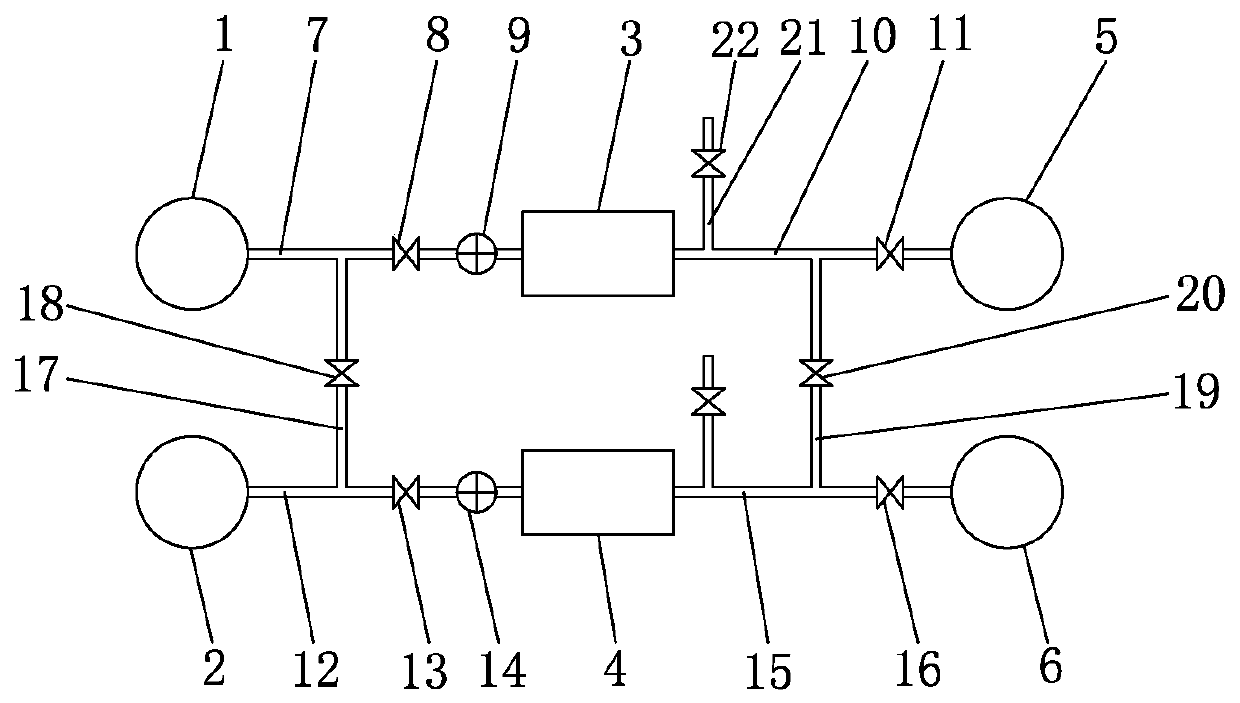Hot-blast stove high-temperature waste gas recycling method
A technology of high-temperature exhaust gas and hot blast stove, which is applied in the field of ironmaking, which can solve the problems of energy waste, increased gas consumption, and short downtime, and achieve the effects of good operation stability, less gas consumption, and reduced emissions
- Summary
- Abstract
- Description
- Claims
- Application Information
AI Technical Summary
Problems solved by technology
Method used
Image
Examples
Embodiment Construction
[0019] The following will clearly and completely describe the technical solutions in the embodiments of the present invention with reference to the accompanying drawings in the embodiments of the present invention. Obviously, the described embodiments are only some, not all, embodiments of the present invention. Based on the embodiments of the present invention, all other embodiments obtained by persons of ordinary skill in the art without making creative efforts belong to the protection scope of the present invention.
[0020] see figure 1 , an embodiment provided by the present invention: a method for recycling high-temperature exhaust gas from a hot blast stove, the method includes the following steps:
[0021] S1: During the overhaul period of the first hot blast stove 1, the first hot blast stove 1 is shut down, and no high-temperature exhaust gas is discharged from the first high-temperature exhaust gas pipeline 7. At this time, the first public regulating valve 18 is op...
PUM
 Login to View More
Login to View More Abstract
Description
Claims
Application Information
 Login to View More
Login to View More - R&D
- Intellectual Property
- Life Sciences
- Materials
- Tech Scout
- Unparalleled Data Quality
- Higher Quality Content
- 60% Fewer Hallucinations
Browse by: Latest US Patents, China's latest patents, Technical Efficacy Thesaurus, Application Domain, Technology Topic, Popular Technical Reports.
© 2025 PatSnap. All rights reserved.Legal|Privacy policy|Modern Slavery Act Transparency Statement|Sitemap|About US| Contact US: help@patsnap.com

